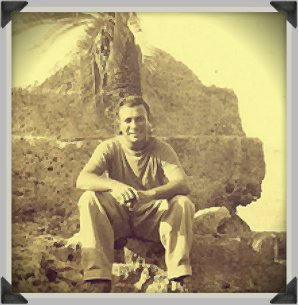Sea Aggie professor is recognized by the Smithsonian Institution.
Tweet Few people have the opportunity to see their work shown at the Smithsonian Institution, but at 93 Dr. Sammy Ray, a marine biology professor at Texas A&M University and world-renowned oyster expert, will have that pleasure. And surprisingly, he’s not being recognized by the Smithsonian for his oyster research. The Smithsonian is paying him tribute for his ornithological research conducted on their behalf in a WWII combat zone.
Few people have the opportunity to see their work shown at the Smithsonian Institution, but at 93 Dr. Sammy Ray, a marine biology professor at Texas A&M University and world-renowned oyster expert, will have that pleasure. And surprisingly, he’s not being recognized by the Smithsonian for his oyster research. The Smithsonian is paying him tribute for his ornithological research conducted on their behalf in a WWII combat zone.
Ray’s bird research will be displayed as part of an exhibit titled, “When Time and Duty Permit’: Smithsonian Collecting during World War II.” Organized jointly by the National Museum of Natural History, the Smithsonian Institution Libraries, and the Smithsonian Institution Archives, the exhibit is slated to run from July 2012 to May 2013. Ray’s bird collection is one of six WWII collections that will be recognized as part of the exhibit.
Research in a war zone
According to Smithsonian representatives, when the United States entered World War II (1941–45), the institute put their research experience to work gathering and distributing information on the geography, cultures, and natural world of the Pacific for military operations.
Smithsonian Museum curators encouraged many soldiers to explore the unfamiliar worlds around them and send specimens to the National Museum. Previous to the war, the Smithsonian noted Ray’s bird research. Ray and other soldier-scientists gathered specimens for identification of species as well as disease prevention for soldiers.
And now more than 50 years after the war, six soldier-scientists are being honored for this body of work. Ray will be the only one present at the exhibit to see his efforts recognized. His fellow collectors who will be honored include Rollin Baker (1916–2007), John Belkin (1913-1980), Herbert G. Deignan (1906–1968), David Johnson (1912–1996) and S. Dillon Ripley (1913–2001). Most of these soldiers were attached to Naval Medical Unit Research 2 in the South Pacific. Their collections included birds, insects, shells and mammals.
Pamela Henson, director of the Smithsonian’s Institutional History Division says Ray’s scientific bird collection was chosen to be part of the exhibit “based on his extensive correspondence with Dr. Alexander Wetmore, Assistant Secretary (and later Secretary) of the Smithsonian, and the wonderful collection of birds that he sent to the United States National Museum.”
The title of the exhibit, “When Time and Duty Permit’: Smithsonian Collecting during World War II,” is actually quoted from one of Ray’s letters in which he promises to try to collect specimens for the Smithsonian, but given his wartime duties as a pharmacist’s mate, tells Dr. Wetmore that he will only be able to do so “when time and duty permit.”
“Ray was a young man, recently married, just out of college, from rural Mississippi, when he went off to war,” Henson said. “He served as a Navy pharmacist’s mate first-class in the 1st Marine Division from the South Pacific island of New Caledonia to North China collecting birds.
“His correspondence with Dr. Wetmore and bird collecting provided him with a break from the stresses of war,” she said. “At the same time, he made wonderful contributions to our collections, and his letters provided a window on the life of a soldier during World War II.”
Ray says the Smithsonian provided him with a collapsible gun called a “marble game getter” to collect birds.
“It wasn’t easy to collect birds, while the enemy was trying to collect me,” Ray said. “With me, they didn’t have a big target to shoot at. I look back on it as one of the most exciting times of my life. The idea of collecting new birds and adding to the Smithsonian’s collection was a passion for me.
“I even collected some of the birds on New Caledonia with a sling shot, because there were some places behind the lines, where I couldn’t shoot. If a bird was scarce on an island and would fit in a cigar box while I was on the move, I would collect it.”
Many of the birds Ray collected were the only birds of that particular species that the Smithsonian did not have at the time.
“Some people don’t know that soldiers collected biological and botanical materials for science,” Ray said. “I made bird skins called “study skins” for scientific study.”
By the end of the 1940s, the Smithsonian had amassed tremendous knowledge and collections from the South Pacific and became a powerhouse in Pacific studies. It remains so today.
And today, as he has done for more than five decades, Ray remains a presence in his laboratory and classrooms at Texas A&M University at Galveston collecting and studying oysters and teaching generations of young Texans about the world around them.
###